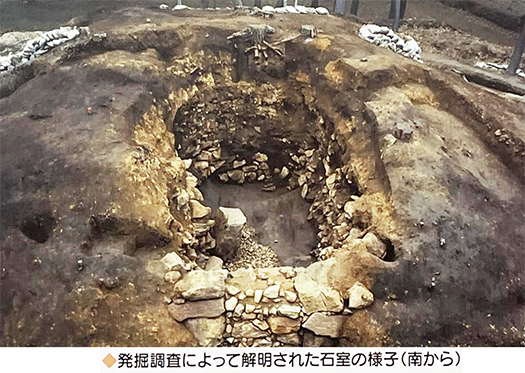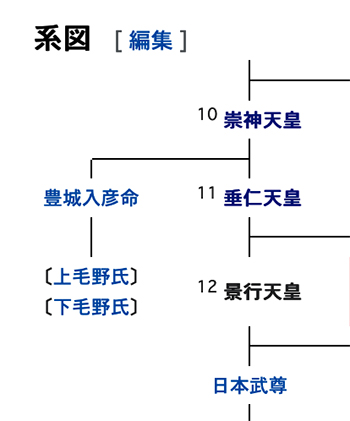


さてようやく建築と歴史探訪篇に復帰です。
奈良県地域が纏向遺跡の時代、実在が確かとされる10代の崇神天皇の
居館建築について復元模型などで考えて見たのですが、一方で
関東の古代豪族について、とくに古代関東中心とされる群馬(上野国)地域の
様子を探ってみたいとずっと考えていました。
ようやくその念願びフックを掛ける機会が先日あったので、
資料を突き合わせながら、ブログ記事執筆を通して深掘り探索したい。
やはり1500年程度以前なので建築的痕跡が残るのは古墳。
群馬県には8000を超える古墳があり奈良・宮崎の両県と並ぶ『古墳県』。
奈良は飛鳥や纏向などの古代国家の中枢地域であり、
宮崎県もまた天孫降臨・東征出発の擬定地とされるので蓋然性があるけれど、
翻って関東の群馬県がなぜかくも、と驚かされる。
歴史事実では白村江敗戦の日本軍中枢に関東豪族・上毛野氏の名前が出る。
この古代大豪族は時代的にこれらの古墳群被葬者の可能性が高い。
そういう関東古代史でも中核的な遺跡として「大室遺跡」がある。
群馬県前橋市近郊にある遺跡で「二子古墳」群が存在する。
古墳に隣接して「関根家」という古民家もあって地域での暮らしぶりも
想像力が掻き立てられる住宅建築空間もある。
歴史の体験感を掘り起こすには、やはり現地体験は不可欠であり、
たとえ後世であってもその地の建築に触れることで探究のリアリティが芽吹く。
この地に来て遺跡が多くの地域のみなさんから愛されている様子もわかる。
そんな「大室公園」に集約された遺跡・古民家を探究してみたい。
まずは古墳の様子であります。
被葬者として想定される「上毛野氏」の由来。
〜景行天皇55年に彦狭島王が「東山道十五国都督」に任命。しかし途中で没したため、
子の御諸別王(みもろわけのおう)が東国に赴いて善政をしき、蝦夷を討った。
これをもって御諸別王が実質的な「毛野」経営の祖(毛野氏の祖)と考えられていて、
上野国・佐位荘(さいのしょう)の権現山にあるお社に祭られた伝承がある。〜
という記録。天皇家との関係系図では以下とされる。

年表を確認すると500年代から600年代にかけてこの地に古墳築造されている。
〜毛野氏族の分布、毛野氏は吉備氏の分流という説が有力。
和泉国の沿岸の古称「渟〜ちぬ」地方が起源地域。現在の大阪湾の東部、
堺市から岸和田市を経て泉南郡に至る一帯。
そこから摂津・河内➡近江➡北陸道(能登)➡信濃➡毛野地方(上野・下野)に
到る経路をとって畿内から東国へ勢力を広げた。〜
少なくとも400〜500年代までにはこの群馬県地域まで進出したものと思える。
同じ名前「大室古墳群」が長野県にも存在するので、この経路は信憑性が高い。
<以下、あす以降に続く>
English version⬇
Exploration of the ancient burial mounds of the “Jomono Clan,” a powerful family in the ancient Kanto region.
The central region of the ancient Kanto region is the Gunma Prefecture area, down from the Shinshu area. Traces of the ancient powerful clan are evidenced in the dense concentration of kofun tumuli. …
Finally, we are back to architecture and history.
I have been thinking about the architecture of the residence of the 10th Emperor Sojin, who is believed to have existed during the period when the area of Nara Prefecture was known as the Mukai ruins.
I have been thinking about the architecture of the residence of the 10th Emperor Sojin, who is believed to have existed at the time of the Momamukai site in Nara Prefecture.
On the other hand, I have been thinking about the ancient powerful families in Kanto, especially in the Gunma (Ueno Province) area, which is considered to be the center of ancient Kanto.
I have always wanted to explore the ancient powerful families of Kanto, especially in Gunma (Ueno Province), the center of ancient Kanto.
I finally had a chance to put the hook on this long-cherished desire the other day, so I decided to write a blog post about it.
I would like to explore it in depth through writing blog posts, while comparing the data.
As I said, since it is about 1,500 years old or earlier, architectural traces remain in the burial mounds.
Gunma Prefecture has more than 8,000 kofun tumuli, making it “Kofun Prefecture” along with Nara and Miyazaki prefectures.
Nara is the center of the ancient state of Asuka and Mukai, and Miyazaki Prefecture is the center of the ancient state of Asuka and Mukai.
Miyazaki Prefecture is also a probable site of the descent of the grandchildren and the departure of the Eastern expedition.
However, it is surprising why Gunma Prefecture is located in the Kanto region of Japan.
According to historical facts, the name of the Kamomono clan, a powerful family in the Kanto region, appears at the center of the Japanese army after the defeat at the Hakumura River.
It is highly likely that this ancient powerful clan was buried in these burial mounds in that period.
The Omuro Ruins are one of the core ruins in the ancient history of the Kanto region.
The tombs are located in the suburbs of Maebashi City, Gunma Prefecture, and include the Futago tumulus cluster.
Adjacent to the burial mounds is an old private house called “Sekine House,” which is a residential building space that stirs the imagination.
There is also a residential architectural space that stirs the imagination.
To uncover a sense of historical experience, it is essential to experience the site.
Even if the architecture is from a later time, the reality of the exploration will sprout when you come into contact with the local architecture.
Coming to this site, we can see how the ruins are loved by many local residents.
I would like to explore such ruins and old houses concentrated in “Omuro Park.
First of all, let us look at the ancient burial mounds.
The origin of the “Jomono clan” assumed to be the buried person.
~ In the 55th year of Emperor Keiko’s reign, King Hikosajima was appointed as “Governor of the Fifteen Provinces of the Eastern Mountain Province”. However, he died on the way.
His son, King Omorowabetsu, went to the east, governed well, and defeated the Emishi.
This is why he is considered to be the actual founder of the “Moya” clan (the founder of the Moya clan).
According to legend, he was worshipped at a shrine on Mt. Gongen in Sainosho, Ueno Province. 〜The record of the shrine is as follows.
The following is a record of the family’s relationship to the Emperor. According to the genealogy of the relationship with the Emperor family
According to the chronology, burial mounds were built in this area between the 500s and 600s.
〜The distribution of the Mono clan, and the theory that the Mono clan is a branch of the Kibi clan, are the most popular.
The ancient name “Nu” or “Chinu” region on the coast of Izumi-no-kuni was the area of origin. The eastern part of present-day Osaka Bay.
The area from Sakai City through Kishiwada City to Sennan-gun.
The area from there to Settsu/Kawachi ➡ Omi ➡ Hokuriku Road (Noto) ➡ Shinano ➡ Kono region (Ueno/Shimono).
The area was then divided into Settsu/Kawachi, Omi, Hokuriku (Noto), Shinano, and Keino regions (Ueno and Shimono). 〜From the
It is thought that they advanced to this area of Gunma Prefecture by at least the 400s to 500s.
This route is highly plausible, since there is a tomb with the same name “Omuro Kofun” in Nagano Prefecture.
<The following will be continued from tomorrow onward.
Posted on 8月 10th, 2022 by 三木 奎吾
Filed under: 住宅マーケティング, 日本社会・文化研究







コメントを投稿
「※誹謗中傷や、悪意のある書き込み、営利目的などのコメントを防ぐために、投稿された全てのコメントは一時的に保留されますのでご了承ください。」
You must be logged in to post a comment.